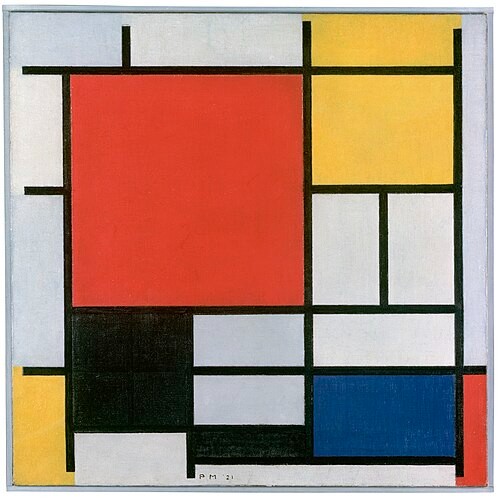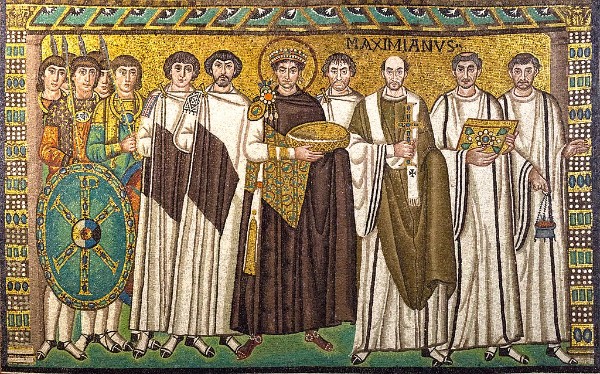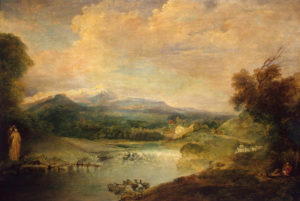
Painting by Antoine Watteau
Paul Verlaine (1844-1896) has been called “one of the most purely lyrical of French poets…an initiator of the modern word-music that marks a transition between the Romantic poets and the Symbolists.” His best poetry declared that the French language could communicate new shades of feeling by suggestion and vagueness, invoking an intimate musicality without the aid of explicit intellect or philosophical content. His second collection Fêtes galantes masks his personal sentiment by delicate evocations of scenes and characters from the Italian comedia dell’arte and from the sophisticated pastorals of painters like Antoine Watteau, Jean-Honoré Fragonard, and Nicolas Lancret. As Stefan Zweig in his biography of the poet put it, “this ability to create effortless, precise forms, to write lines of melodious fluidity made him the favourite poet of the masters of French art songs.”
Tranquil in the twilight dense
By the spreading branches made,
Let us breathe the influence
Of the silence and the shade.
Let your heart melt into mine,
And your soul reach out to me,
‘Mid the languors of the pine
And the sighing arbute-tree.
Close your eyes, your hands let be
Folded on your slumbering heart,
From whose hold all treachery
Drive forever, and all art.
Let us with the hour accord!
Let us let the gentle wind,
Rippling in the sunburnt sward,
Bring us to a patient mind!
And when Night across the air
Shall her solemn shadow fling,
Touching voice of our despair,
Long the nightingale shall sing.
Claude Debussy: Fêtes galantes, “En sourdine” (Eva Resch, soprano; Francois Salignat, piano)
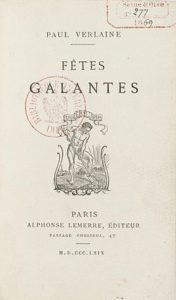
Fêtes galantes by Paul Verlaine
Debussy set this poem twice, first in 1882 and then again in 1892. In his later version Debussy focuses on aural imagery, capturing the deep silence by evoking stillness through long held chords, static line, and repeated notes in pianissimo. Debussy’s focus on the sonic component of the scenery is enhanced by the introduction of the nightingale melody, which gently modulates through different registers and rhythmic variations. As a musicologist once remarked, “Debussy is part musician and part poet.”
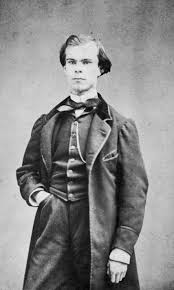
Paul Verlaine
Gabriel Fauré composed his setting of “En sourdine” in 1891, and his setting is generally considered somewhat less sophisticated and primarily focused on the musical aspects. Nothing could be further from the truth, however, as Fauré focuses on the visual imagery, creating a dimly lit and subdued atmosphere. He appears to infuse the quiet environment with a gentle breeze of arpeggiated figuration that wanders through his entire setting. For scholars, Fauré’s choices of tonalities “convey comfort and calm intimacy, and the trust and reciprocation between man and woman…” Fauré, it should be said, stays as close to the text as Debussy but approaches it from a somewhat different angle.
Gabriel Fauré: 5 Melodies de Venise, Op. 58 “En sourdine” (Carl Ghazarossian, tenor; David Zobel, piano)
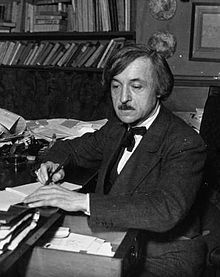
Raoul Laparra
The poem immediately transports us into the profound silence of twilight. A gentle breeze rustles the grass while everything else is calm and hushed. Against this gentle and quiet landscape we glimpse the privacy shared by two lovers, which progresses from ecstasy to despair. But it is the fusion of the lovers’ hearts with nature that captures our attention. It almost gives the impression of a Watteau painting, infused with the singing of a nightingale. “The poem gradually transitions from muted daylight and hopeful love in the first stanza to gloomy evening and despair in the last.”
Raoul Laparra (1876-1943) was born in Bordeaux, and he studied with Gedalge, Massenet, Lavignac and Fauré at the Conservatoire de Paris. He won the Premier Grand Prix de Rome in 1903, and eventually became a teacher at the Conservatoire. In his spare time, he worked as a music critic for a number of magazines and his setting of “En sourdine” explores the gently shifting color of twilight in the piano while the recitative-like vocal line is only once punctuated by pure ecstasy.
Raoul Laparra: “En sourdine” (Carl Ghazarossian, tenor; David Zobel, piano)

Charles Martin Loeffler
Charles Martin Loeffler (1861-1935) consistently claimed to have been born in Mulhouse, in Alsace. But that was clearly not the case as he hailed from Berlin, Germany. He studied with Joseph Joachim and Woldemar Bargiel—the brother in law of Clara Schumann—but when his father was imprisoned and tortured by Prussian authorities on a charge of espionage, he made his way to Paris. He continued his studies at the Conservatoire de Paris under Massart and Guiraud, and in 1882 joined the newly founded Boston Symphony Orchestra. As a composer he has a strong allegiance to his French contemporaries Franck, Chausson and Debussy, but adoring the works of George Gershwin, he also wrote works in jazz style. He set several poems by Verlaine for the combination of voice, viola and piano. In his setting of “En sourdine,” the viola transcends all accompanimental functions and turns the poem into a veritable love duet.
Charles Martin Loeffler: “Reverie en sourdine” (William Dazeley, baritone; London Conchord Ensemble)

